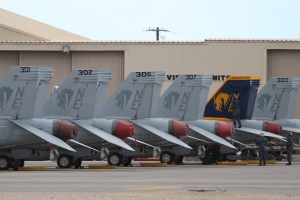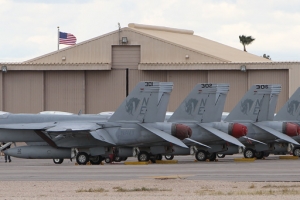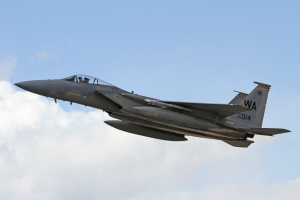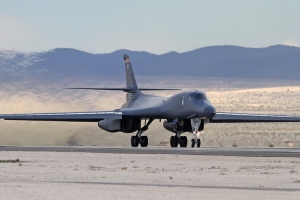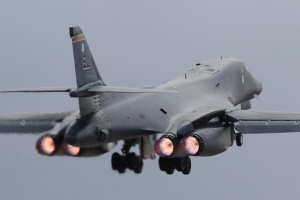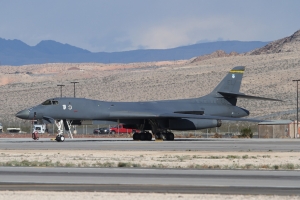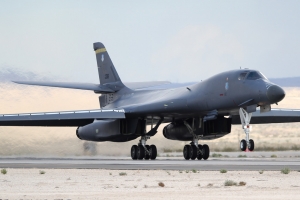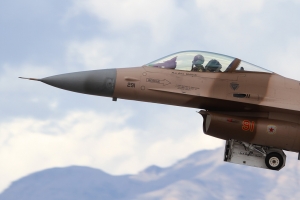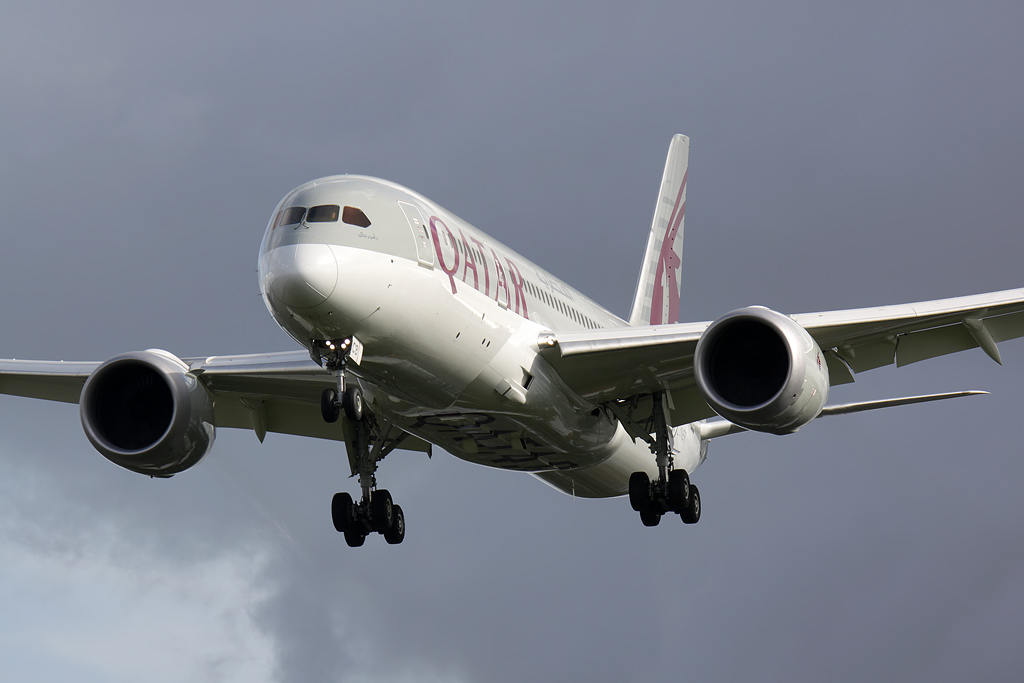With only a two-week gap after the end of Red Flag 15-1, Red Flag 15-2 started on 2 March at Nellis AFB, Nevada. Unlike 15-1 this was a two-week exercise, and involved around 90 aircraft which had deployed to Nellis. As well as the US Air Force, there were aircraft from the US Marine Corps and from NATO, Norway and the United Arab Emirates. Chris Wood reports.

A pair of B-1Bs launch from Nellis © Chris Wood – globalaviationresource.com
Red Flag 15-2 was quite different to 15-1 in terms of participants, with fewer air-to-air and ISR (Intelligence, Surveillance and Reconnaissance) assets. According to Lt Col Phil Stodick from the 57th Operations Group, who was previously the Commander of the 18th Aggressor Squadron at Eielson AFB, Alaska, the planning staff tailor the exercise around the participants’ roles and capabilities.
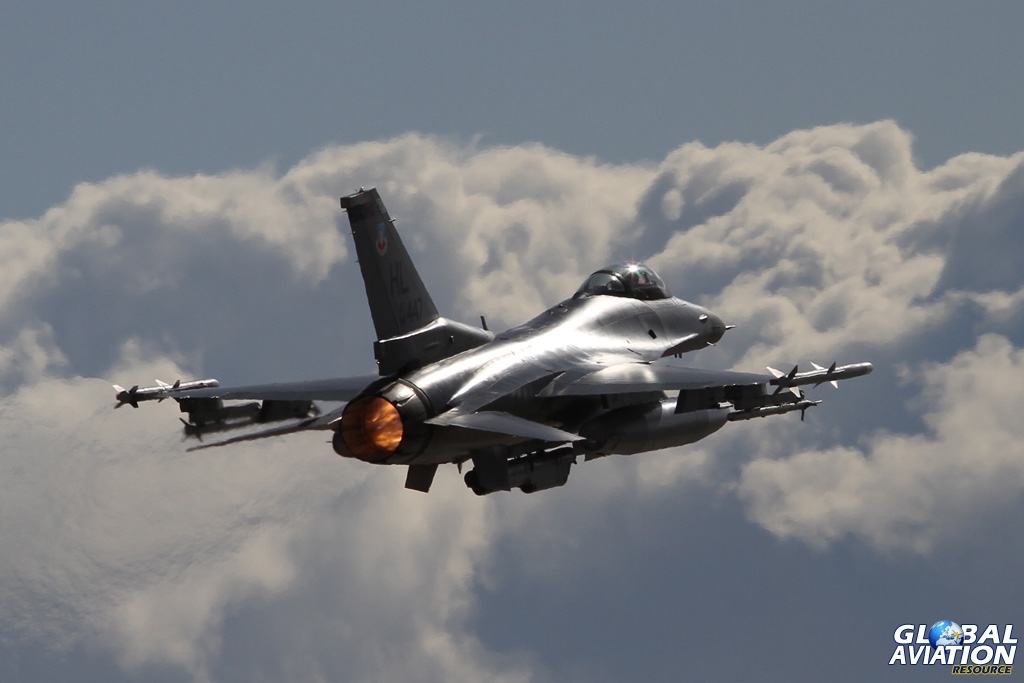
A 421st Fighter Squadron F-16C gets airborne © Chris Wood – globalaviationresource.com
He went on to say that 15-2 “is the first Red Flag where we’re going to integrate Red Flag with Virtual Red Flag. What this means is that [there will] be participants in simulators flying various platforms and that data will be sent here [Nellis] and integrated into the Red Flag exercise”. This is known as Live, Virtual and Constructive (LVC) and allows hundreds of virtual participants in simulators at their home stations, or at the Distributed Mission Operations Center at Kirtland AFB, New Mexico, to participate in the exercises.
According to Lt Col Kenneth Voigt, Commander of the 505th Test Squadron, combining Virtual Flag with Red Flag will create a new era of integrated Flags. The benefits are that it allows for an expansion of the combat-realistic threat envelope, covering a live and virtual area that is around 1,000 miles square, compared to the live Nellis Test and Training Range (NTTR), which is only about 100 miles square.

Will we be seeing fewer ‘real’ aircraft and more ‘virtual’ ones in future Red Flags? © Chris Wood – globalaviationresource.com
Lt Col Stodick again: “For the second part of the exercise a simulated E-8 JSTARS [at Kirtland AFB] will be popping out surface tracks to actual aircraft flying in the exercise”. This gets around budgetary or programming issues and means the training can continue even if assets aren’t available.
Making up the Blue Force for Red Flag 15-2 were the following units:
23rd Bomb Squadron ‘Barons’, 5th Bomb Wing, Minot AFB, North Dakota, with four B-52H Stratofortresses.

The 5th Bomb Wing Commander’s aircraft © Chris Wood – globalaviationresource.com
37th Bomb Squadron ‘Tigers’, 28th Bomb Wing, Ellsworth AFB, South Dakota, with five B-1B Lancers.

In a flurry of heat and noise, a B-1B heads to the NTTR © Chris Wood – globalaviationresource.com
421st Fighter Squadron ‘Black Widows’, 388th Fighter Wing, Hill AFB, Utah, with 12 F-16Cs and one F-16D Fighting Falcon.
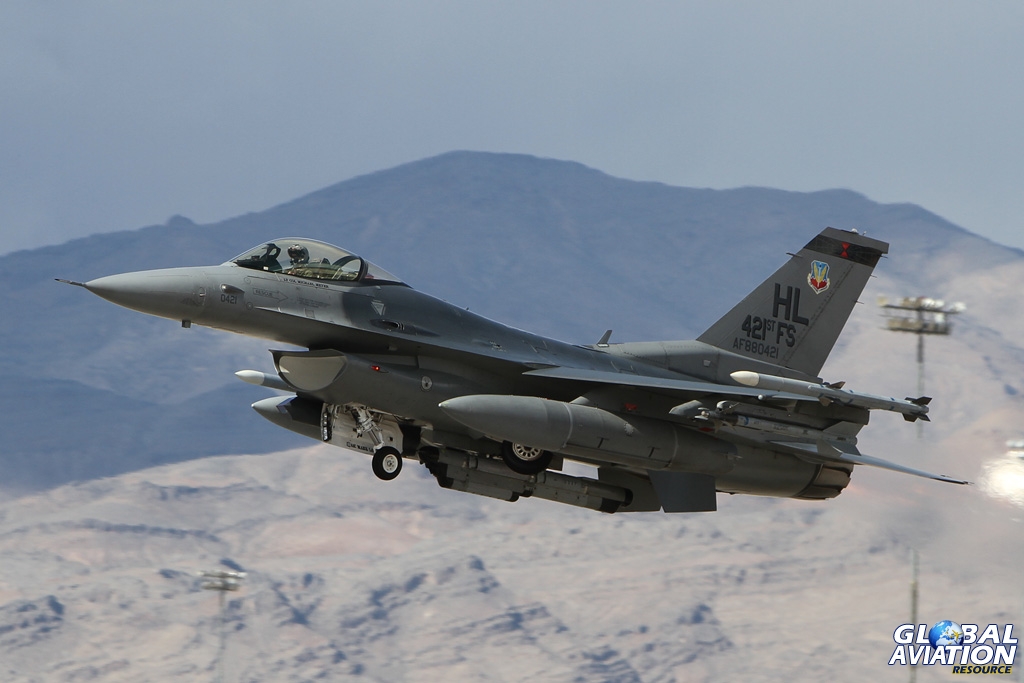
One of several F-16 units taking part, the 421st Fighter Squadron live just up the road at Hill AFB, outside Salt Lake City, Utah © Chris Wood – globalaviationresource.com
55th Fighter Squadron ‘Fighting Fifty Fifth’, 20th Fighter Wing, Shaw AFB, South Carolina, with 12 F-16Cs and two F-16Ds, in the Suppression of Enemy Air Defences (SEAD) role.
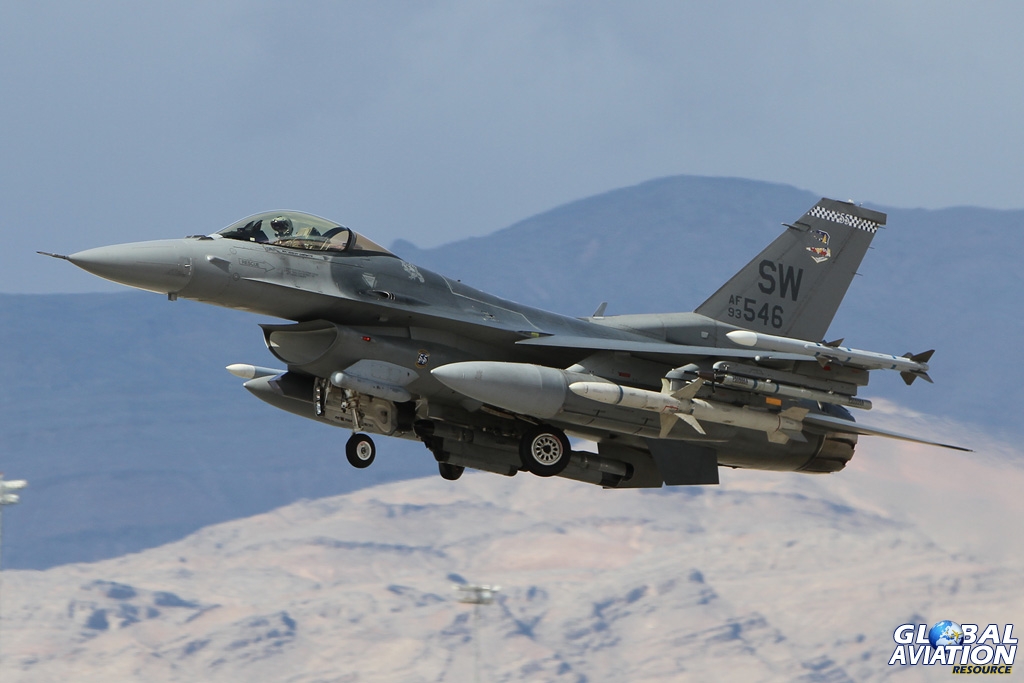
Regular Red Flag attendees are the 20th Fighter Wing, this time represented by the 55th Fighter Squadron © Chris Wood – globalaviationresource.com
125th Fighter Squadron, 138th Fighter Wing, Oklahoma ANG, Tulsa International Airport, Oklahoma, with eight F-16Cs.

An F-16C from the 125th Fighter Squadron heads to the ranges carrying live ordnance in the form of Mk82 bombs © Chris Wood – globalaviationresource.com

…….. which weren’t dropped. Conditions aren’t always suitable for weapon release © Chris Wood – globalaviationresource.com
VMAQ-3 ‘Moon Dogs’, 2nd Marine Air Wing, MCAS Cherry Point, North Carolina, with six EA-6B Prowlers.

The Marine Corps are now the only operator of the EA-6B © Chris Wood – globalaviationresource.com
338 Squadron, Royal Norwegian Air Force, Ørland Main Air Station, Norway, with ten F-16AMs. 338 was the lead squadron, but the detachment included pilots from both 331 and 332 Squadrons at Bodo. According to Major Egil Jacobsen, a pilot with 338 Squadron, their tasking was roughly a 50/50 split of air-to-air and air-to-ground, which he described as swing role, a phrase which is being used more frequently.
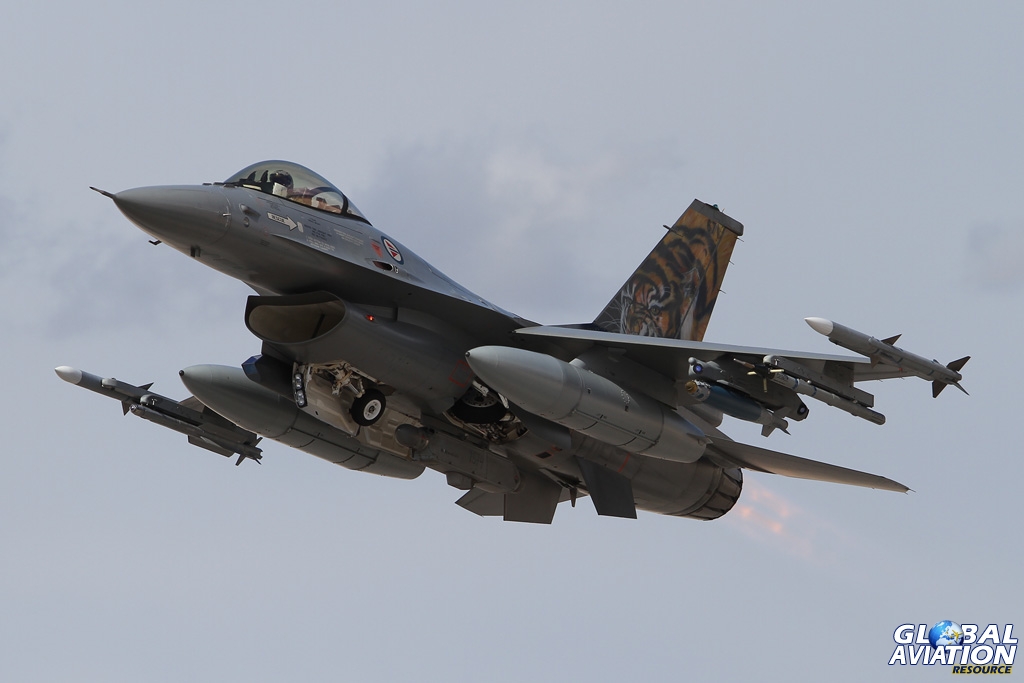
338 Squadron brought one of their tiger tailed jets to Nellis © Chris Wood – globalaviationresource.com
United Arab Emirates Air Force, Al Dhafra Air Base, with four single-seat Mirage 2000-9EADs and a pair of two-seat Mirage 2000-9s.
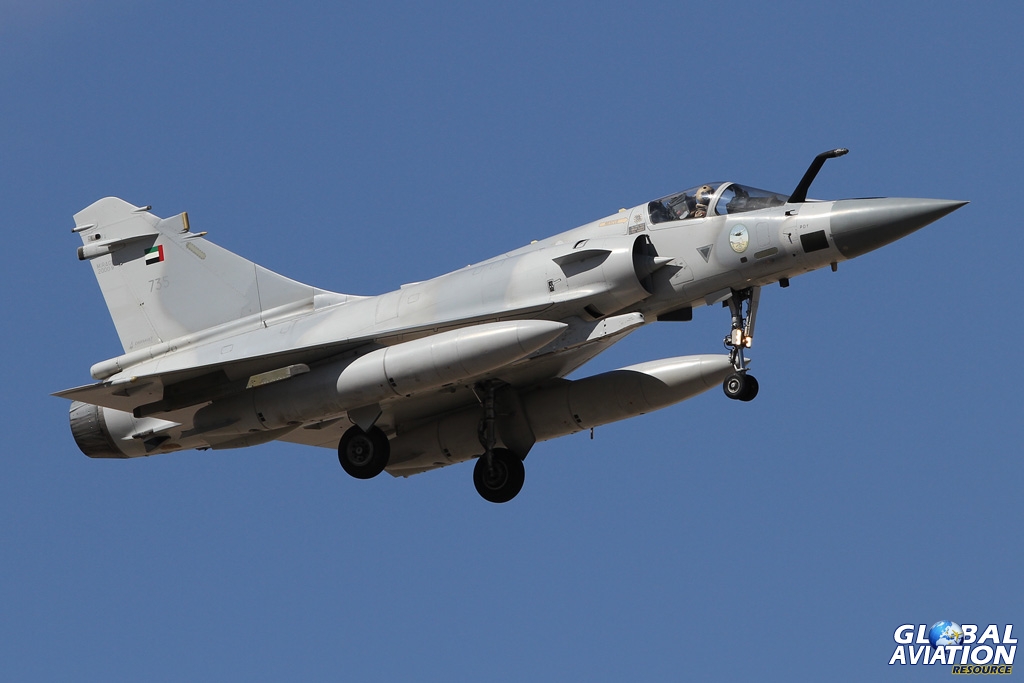
One of six UAE Mirage 2000s taking part © Chris Wood – globalaviationresource.com
422nd Test and Evaluation Squadron, 53rd Wing, Nellis AFB, Nevada, with F-15C Eagles.
85th Test and Evaluation Squadron, 53rd Wing, Eglin AFB, Florida, with three F-15Cs.

85th TES F-15C on approach to Nellis © Chris Wood – globalaviationresource.com
40th Flight Test Squadron, 96th Test Wing, Eglin AFB, Florida, with one F-15C.

40th FLTS F-15C © Chris Wood – globalaviationresource.com
The 422nd TES, 85th TES and the 40th FLTS aircraft were working together, and also appeared to be using aircraft from the based 433rd Weapons Squadron. The job of the TES is to perform operational test and evaluation and tactics development for Air Combat Command.
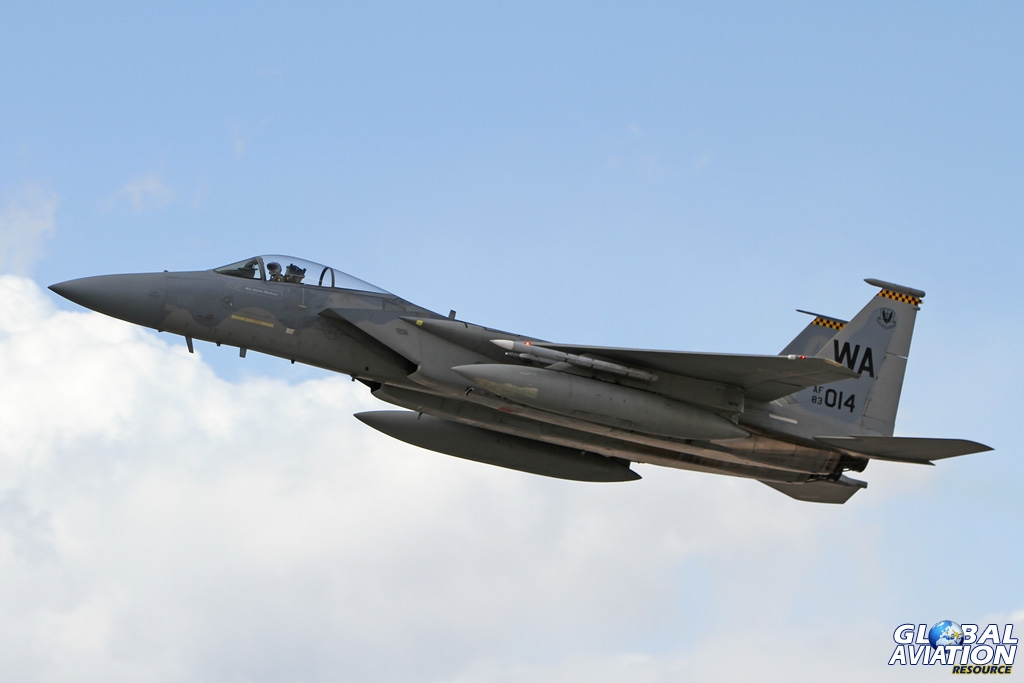
A 433rd WPS F-15C launches in a flight of four, with one aircraft from the 85th TES, one from the 422nd TES and one from the 40th FLTS © Chris Wood – globalaviationresource.com
ISR assets:
965th Airborne Air Control Squadron, 552nd Air Control Wing, Tinker AFB, Oklahoma, with one E-3B and one E-3C Sentry.
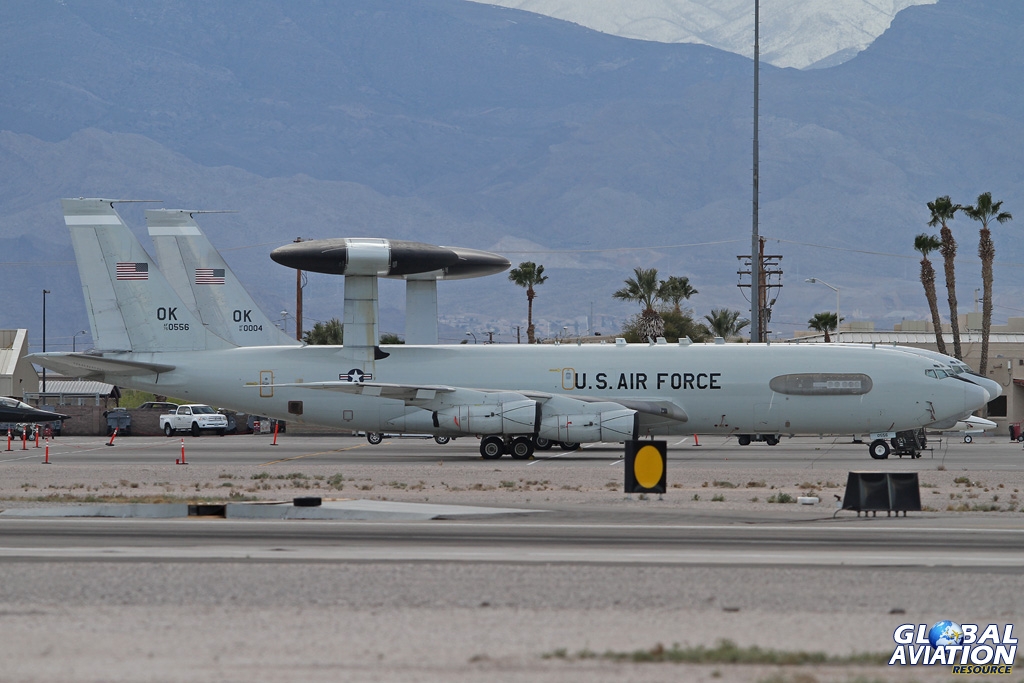
The two USAF E-3s © Chris Wood – globalaviationresource.com
NATO Airborne Early Warning & Control Force, Geilenkirchen, Germany, with two E-3A Sentries.
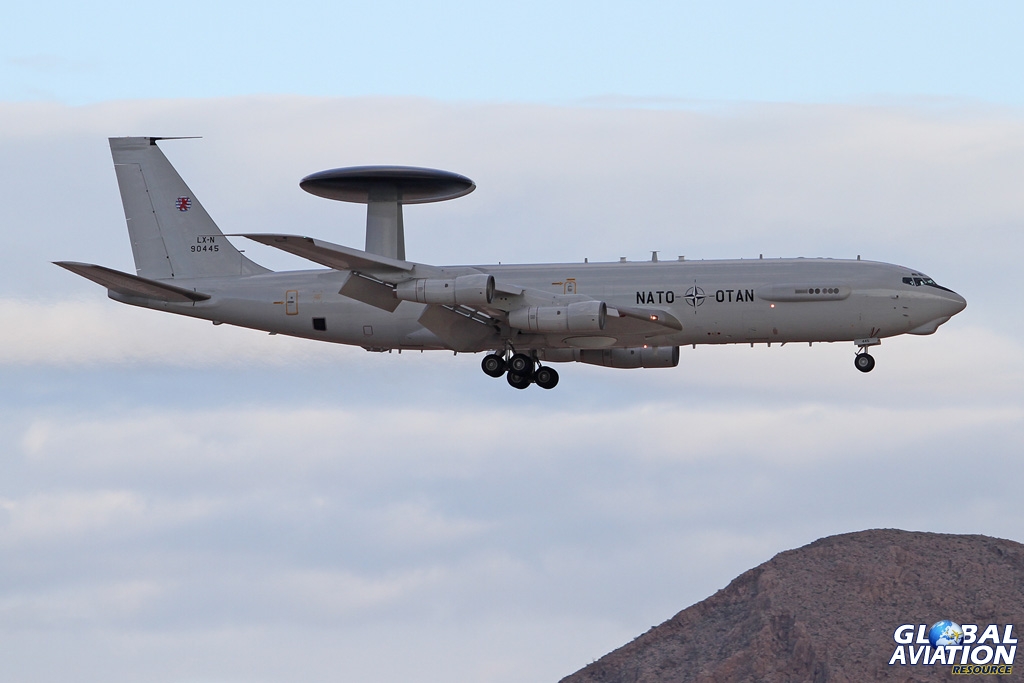
© Chris Wood – globalaviationresource.com
Tanker assets included:
344th Air Refuelling Squadron (ARS), 22nd Air Refuelling Wing (ARW), McConnell AFB, Kansas, with two KC-135R Stratotankers, one of which was fitted with the Multi Point Refuelling System (MPRS) pods.

MPRS fitted KC-135R getting airborne © Chris Wood – globalaviationresource.com
92nd ARW, Fairchild AFB, Washington, with one KC-135R.

92nd ARW KC-135R on finals © Chris Wood – globalaviationresource.com
173rd ARS, 155th ARW, Nebraska ANG, Lincoln Municipal Airport, Nebraska, with one KC-135R.

About to touch down for its second landing (! – note the tyre smoke behind), the Nebraska ANG KC-135R © Chris Wood – globalaviationresource.com
Combat Search and Rescue (CSAR):
335 Squadron, Royal Norwegian Air Force, Gardermoen Airport, Norway, with two C-130J Super Hercules.
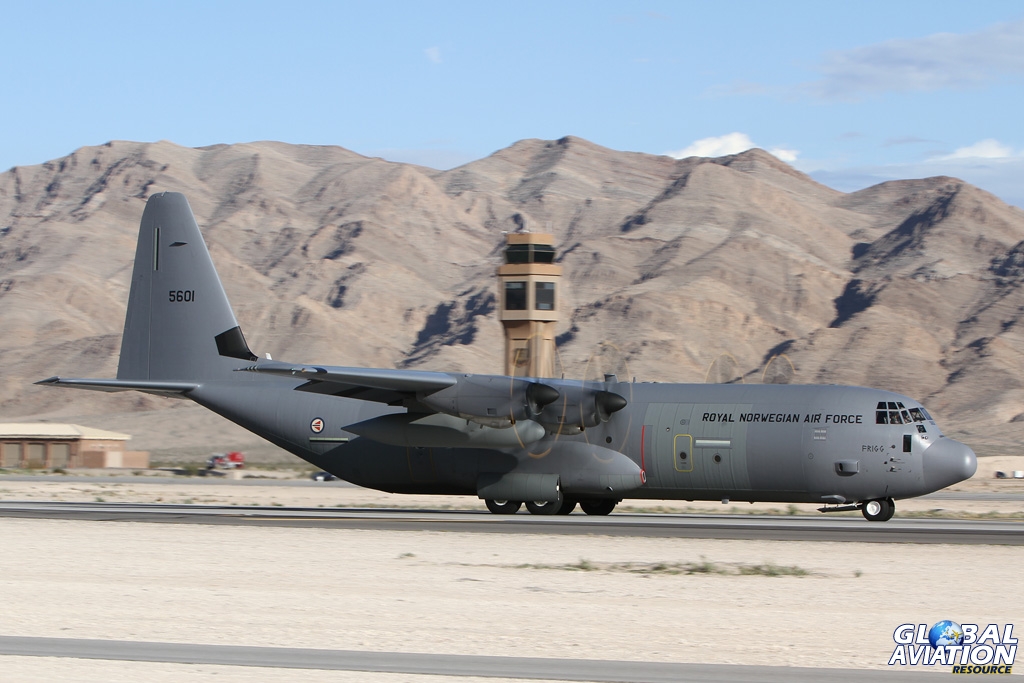
One of two C-130Js from Norway © Chris Wood – globalaviationresource.com
71st Rescue Squadron, 23rd Wing, Moody AFB, Georgia, with one HC-130J Combat King II.
41st Rescue Squadron, 23rd Wing, Moody AFB, Georgia, with three HH-60G Pavehawks.
The Red Force comprised the Nellis-based 64th Aggressor Squadron flying the F-16C and the last few F-15Cs, on their final Red Flag.
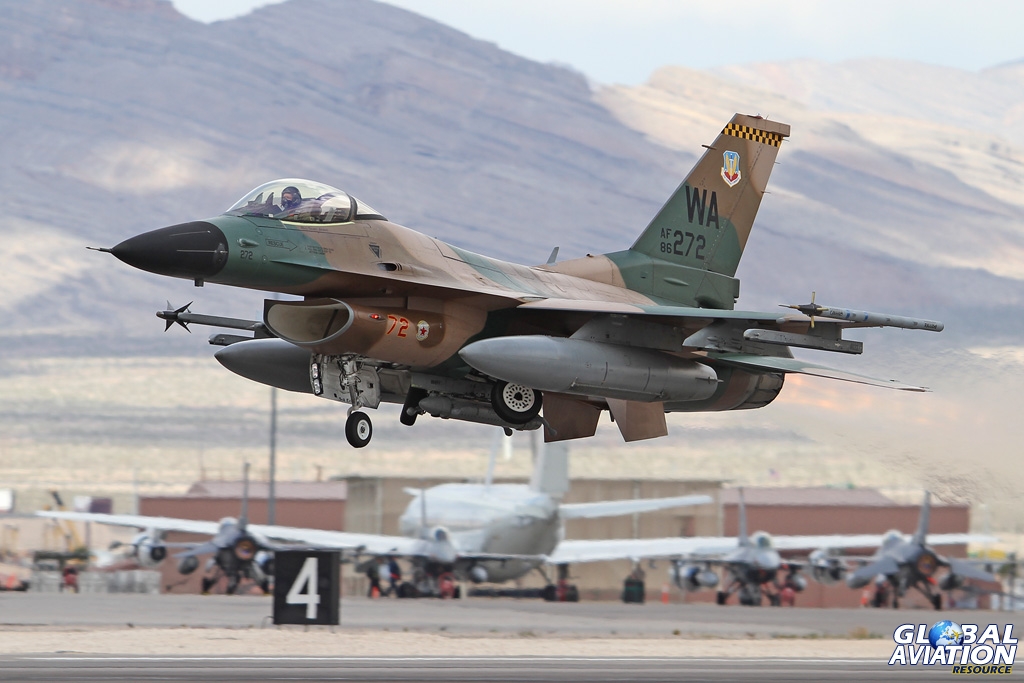
A 64th AGRS F-16C keeps it low © Chris Wood – globalaviationresource.com
These were augmented by:
435th Flying Training Squadron ‘Black Eagles’, 12th Flying Training Wing, Randolph AFB, Texas, with five T-38C Talons. They only took part in the daylight Red Flag missions, but also flew sorties with the Weapons School whilst at Nellis.

The 435th FTS flew four aircraft during the daylight missions © Chris Wood – globalaviationresource.com
15-2 was the last Red Flag to feature the Aggressor F-15. Whilst there are no plans to replace the F-15 in the aggressor role, it is anticipated that future exercises will see more visiting participants joining the Red Force.
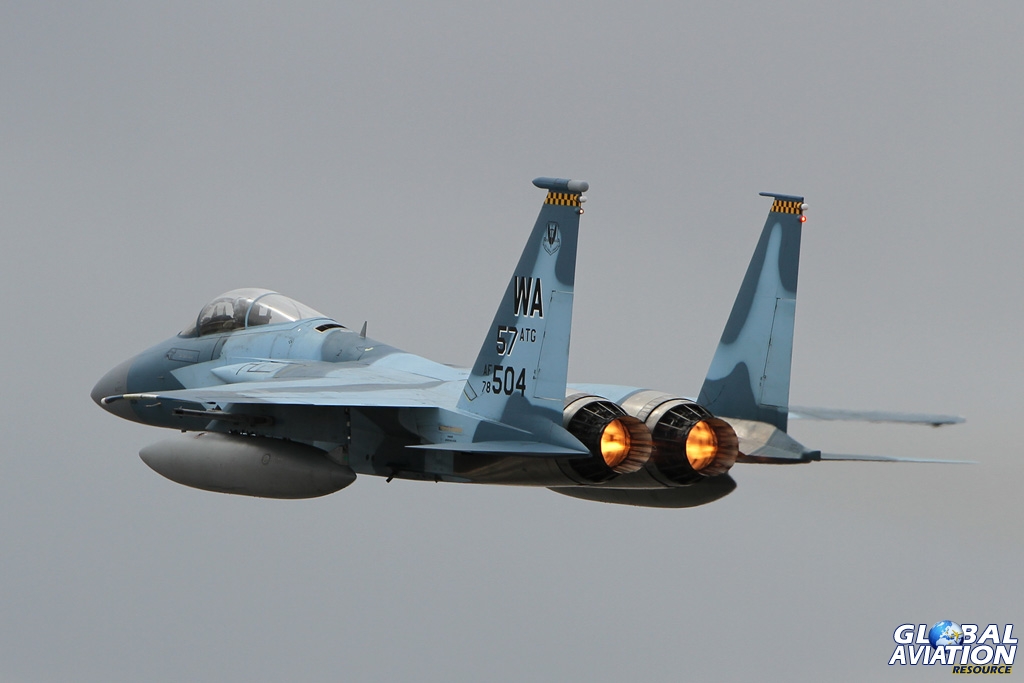
This was the last Red Flag for the aggressor F-15 © Chris Wood – globalaviationresource.com
For this exercise the Red Force was augmented by a number of T-38s, and as the T-38 was the aircraft that was used to start the aggressor concept it seemed an appropriate choice. Lt Col Stodick went on to explain that these additional units joining the Red Force won’t be trained as aggressors – they will be using their usual procedures and tactics.
However, this is not new for Red Flag, and has happened on previous exercises. During 15-1 a squadron of F-15Es joined the Red Force for the duration of the exercise and on both Mondays of 15-2, and on previous exercises, some of the Blue Force switched sides. For the first day of this exercise a pair of EA-6Bs and a B-1B joined the Red Force.
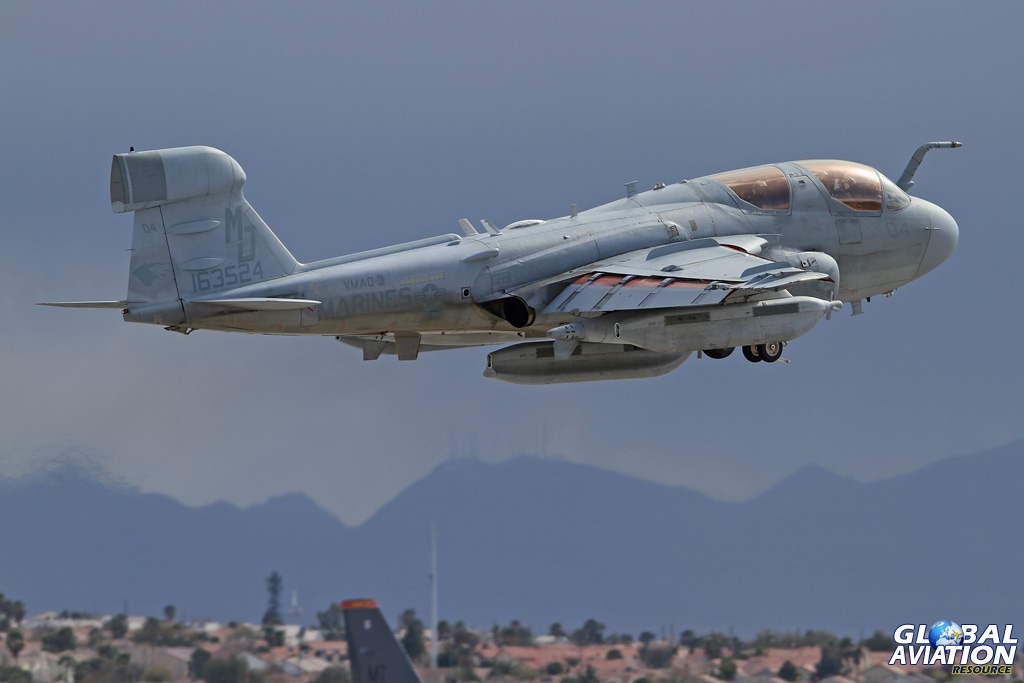
Not always friendly, a VMAQ-3 Prowler heads for the ranges © Chris Wood – globalaviationresource.com
Red Flag is only one aspect of the operations at Nellis, so whilst Red Flag 15-2 was taking place there are also other aircraft using the facilities. 14 F-16Cs from the 555th Fighter Squadron, that had taken part in Red Flag 15-1, were still at Nellis during the first week of 15-2, taking part in a Green Flag exercise. Green Flag is a close air support exercise that takes place at Fort Irwin, California, which is roughly half way between Las Vegas and Los Angeles.
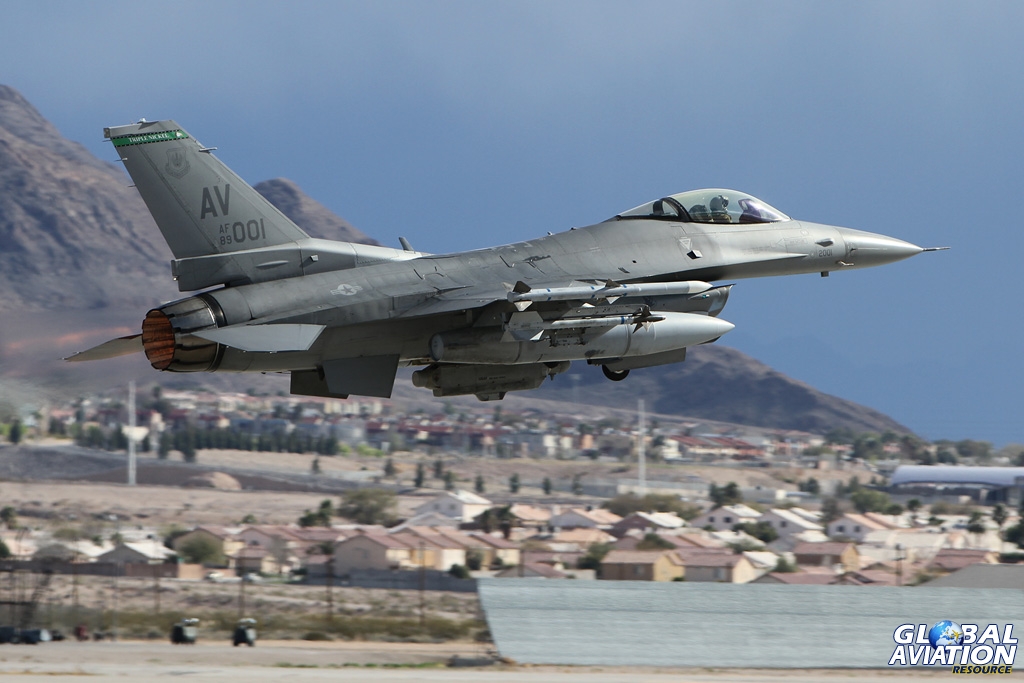
Still at Nellis, the 555th FS were taking part in Green Flag © Chris Wood – globalaviationresource.com
Also at Nellis were six F/A-18Es Super Hornets from VFA-192 ‘Golden Dragons’ at NAS Lemoore, California.

Six F/A-18Es on the Nellis ramp, but not taking part in Red Flag © Chris Wood – globalaviationresource.com
Also resident were a trio of MH-60S Seahawks from HSC-23 ‘Wildcards’ at NAS North Island, California.
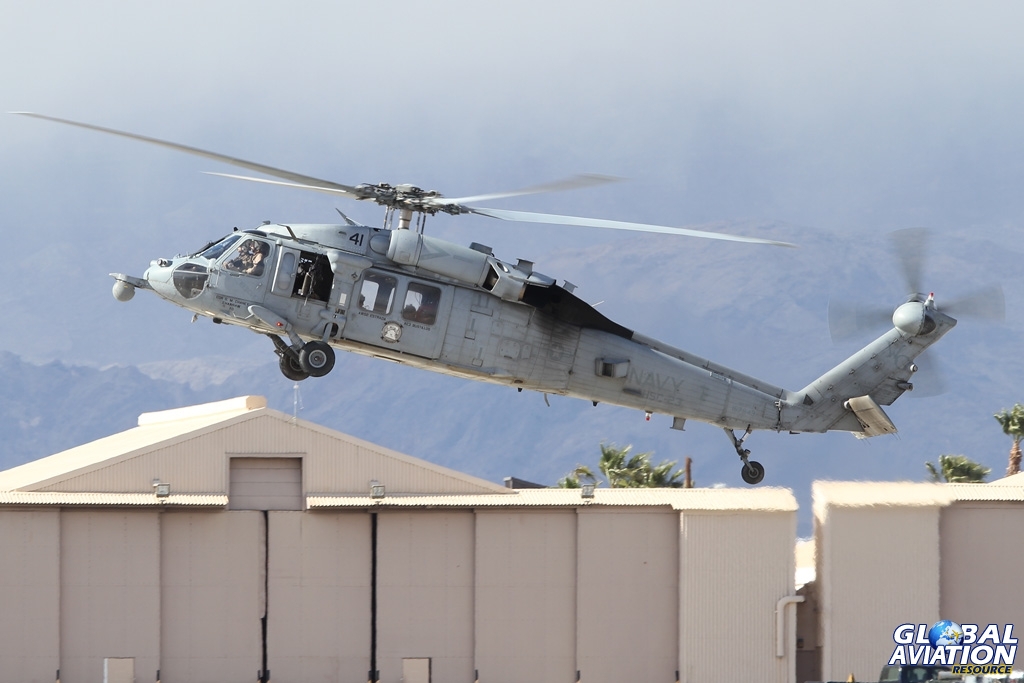
One of three HSC-23 MH-60S © Chris Wood – globalaviationresource.com
There’s always something happening at Nellis!
Red Flag 15-2 wrapped up on 13 March. Red Flag 15-3, another three week exercise, is scheduled to start on 13 July. Whilst the list of participants hasn’t been released yet, there are rumours of some interesting players for the summer exercises!



